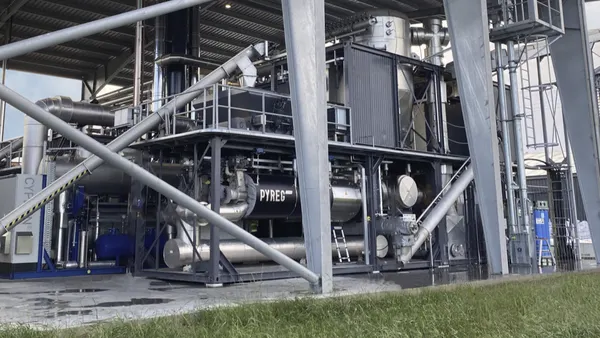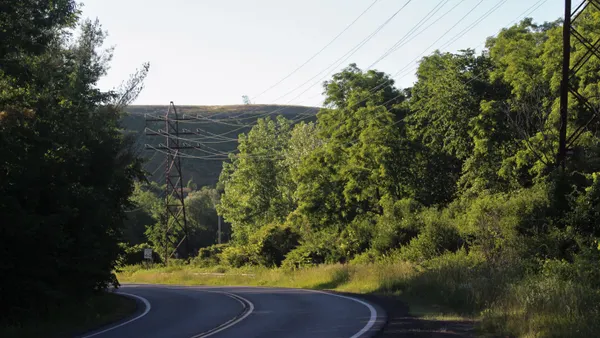Dive Brief:
- The Heartland Biogas (HBG) Facility, touted as one of the largest U.S. anaerobic digestion plants and renewable natural gas facilities is slated to open in a few weeks. It will generate methane using Eaton, CO- based A1 Organic's digester processing system.
- Among features are a DODA bio-separation system to clean contaminants and a Tiger HS 640 de-packaging system to separate food and packaging. The separated packaging will be recycled or landfilled. The food waste slurry will be fed to the HBG facility. The system also generates a compost-like product and liquid soil from remaining waste.
-
The HBG plant, owned and operated by San Diego-based EDF Renewable Energy, should initially produce around 4.5 million cubic feet of natural gas a day to be sold for electrical power generation. The plant is currently producing renewable natural gas to be injected into a trans-continental gas pipeline.
Dive Insight:
Anaerobic digestion is a practical and resourceful way to deal with food waste, generate energy, and divert organic materials from landfills. The technology is beginning to catch on in Connecticut, New York, California, and elsewhere.
But there have been some barriers to anaerobic digestion's take off, industrywide.
"There are segments of the substrate streams that are new to this process, such as packaged source separated organics. Reversing the trend (of landfilling) … is taking time to catch on in the industry. (Some) companies need to see a direct benefit in responsibly managing food waste in light of the already written off costs of their inventory shrinkage and their current municipal solid waste expenses," Scott Pexton, Substrate Sales and Account Management for A1 Organics told Waste360.








